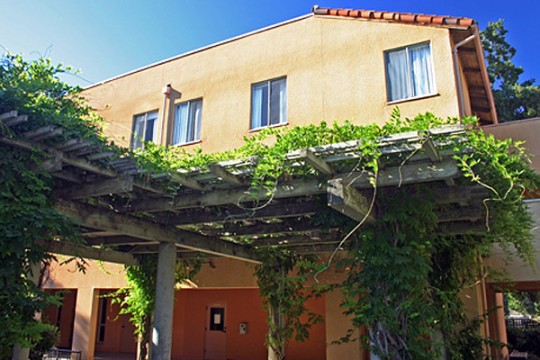About Stanford University.
Sections for Stanford University
- About Stanford University.
- About Stanford University. Overview.
- Paul F. Glenn Laboratories for the Biology of Aging at Stanford University.
Stanford University. About Stanford University.
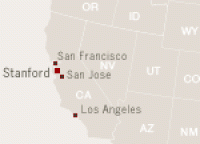
Located between San Francisco and San Jose in the heart of Silicon Valley, Stanford University is recognized as one of the world’s leading research and teaching institutions.
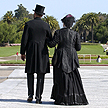
Leland and Jane Stanford founded the University to “promote the public welfare by exercising an influence on behalf of humanity and civilization.” Stanford opened its doors in 1891, and more than a century later, it remains dedicated to finding solutions to the great challenges of the day and to preparing our students for leadership in today’s complex world.

> About Stanford University. History of Stanford University.
THE BIRTH OF THE UNIVERSITY
In 1876, former California Governor Leland Stanford purchased 650 acres of Rancho San Francisquito for a country home and began the development of his famous Palo Alto Stock Farm. He later bought adjoining properties totaling more than 8,000 acres. The little town that was beginning to emerge near the land took the name Palo Alto (tall tree) after a giant California redwood on the bank of San Francisquito Creek. The tree itself is still there and would later become the university’s symbol and centerpiece of its official seal.
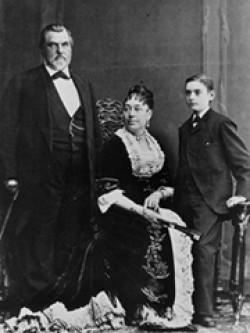
Leland Stanford, who grew up and studied law in New York, moved West after the gold rush and, like many of his wealthy contemporaries, made his fortune in the railroads. He was a leader of the Republican Party, governor of California and later a U.S. senator. He and Jane had one son, who died of typhoid fever in 1884 when the family was traveling in Italy. Leland Jr. was just 15. Within weeks of his death, the Stanfords decided that, because they
no longer could do anything for their own child, “the children of California shall be our children.” They quickly set about to find a lasting way to memorialize their beloved son.
The Stanfords considered several possibilities – a university, a technical school, a museum. While on the East Coast, they visited Harvard, MIT, Cornell and Johns Hopkins to seek advice on starting a new university in California. (See note regarding accounts of the Stanfords visit with Harvard President Charles W. Eliot.) Ultimately, they decided to establish two institutions in Leland Junior’s name – the University and a museum. From the outset they made some untraditional choices: the university would be coeducational, in a time when most were all-male; non-denominational, when most were associated with a religious organization; and avowedly practical, producing “cultured and useful citizens.”
On October 1, 1891, Stanford University opened its doors after six years of planning and building. The prediction of a New York newspaper that Stanford professors would “lecture in marble halls to empty benches” was quickly disproved. The first student body consisted of 555 men and women, and the original faculty of 15 was expanded to 49 for the second year. The university’s first president was David Starr Jordan, a graduate of Cornell, who left his post as president of Indiana University to join the adventure out West.
The Stanfords engaged Frederick Law Olmsted, the famed landscape architect who created New York’s Central Park, to design the physical plan for the university. The collaboration was contentious, but finally resulted in an organization of quadrangles on an east-west axis. Today, as Stanford continues to expand, the university’s architects attempt to respect those original university plans.
THE NEW CENTURY
After Leland Stanford’s death in 1893, the university entered a period of financial and legal uncertainties resulting from federal challenges to his estate. During that time, Jane Stanford took over the responsibility of ensuring that the new university would prosper. The estate was released from probate in 1898 and the following year, after selling her railroad holdings, Jane Stanford turned over $11 million to the university trustees. What President Jordan termed “six pretty long years” had come to a close. During that time, he said, “the future of a university hung by a single thread, the love of a good woman.”
Jane died in 1905, after having relinquished to the university trustees control over the university’s affairs and having supervised construction of the buildings she and her husband had envisioned, including the magnificent Memorial Church.
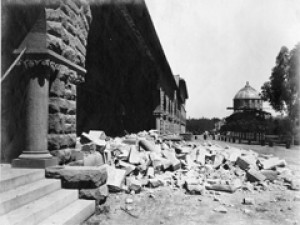
Early on the morning of April 18, 1906, a violent earthquake wrecked many of the new buildings and killed two people on campus. Some of the structures were never rebuilt; others, like the church, rose again. Graduation was postponed until September, but by then there was no doubt that Stanford’s entrepreneurial spirit would carry it through whatever obstacles lay ahead. (More about Stanford and the 1906 Earthquake.)
In the following years, Stanford opened professional schools of medicine, business, engineering, education and law. The university lost more than 70 men and women in World War I. In its aftermath, Herbert Hoover, a graduate of Stanford’s pioneer class who by then was working in war relief, donated materials and money to establish a collection of documents on war and peace. That collection would eventually become the Hoover Institution. In 1928, Hoover was elected president of the United States.
THE RISE OF SILICON VALLEY
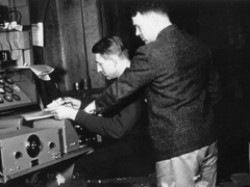
In 1939, with the encouragement of their professor and mentor, Frederick Terman, Stanford alumni David Packard and William Hewlett established a little electronics company in a Palo Alto garage. That garage would later be dubbed “the Birthplace of Silicon Valley.” Over the following years, Stanford would be a wellspring of innovation, producing advances in research and the formation of many companies that have made Silicon Valley one of the most innovative and productive high-tech regions in the world.
In 1947, professor William W. Hansen unveiled an electron linear accelerator prototype, and the following year construction began on a new Microwave Laboratory. In 1951 Varian Associates built a research and development lab on the edge of campus that would become the famed Stanford Industrial Park, now known as Stanford Research Park. In 1952, Stanford won its first Nobel Prize, which went to physics Professor Felix Bloch; three years later his colleague Willis Lamb, Jr. also won a Nobel.
Under the leadership of Terman, a professor of electrical engineering who served as provost from 1955 to 1965, the university embarked upon a campaign to build “steeples of excellence,” clusters of outstanding science and engineering researchers who would attract the best students. His role in fostering close ties between Stanford students and the emerging technology industries has led some to consider him the father of Silicon Valley. He created an entrepreneurial spirit that today extends to every academic discipline at Stanford.
Two of the university’s most iconic scientific institutions were built in the 1960s: the 2-mile-long linear accelerator (SLAC National Laboratory); and “the Dish,” a 150-foot diameter radio antenna in the foothills built as a joint venture between the Stanford Research Institute (SRI) and the Air Force. Also in the 1960s, Professor John Chowning developed FM sound synthesis to digitally generate sounds, leading to the invention of the music synthesizer.
In the early 1970s, professor Vinton Cerf, known as the “father of the Internet,” developed with a colleague the TCP/IP protocols which would become the standard for Internet communication between computers. In the 1980s, John Cioffi and his students realized that traditional phone lines could be used for high-speed data transmission, leading to the development of digital subscriber lines (DSL). In 1991, SLAC physicist Paul Kunz set up the first web server in the U.S. after visiting Tim Berners-Lee, creator of the World Wide Web, in Geneva, Switzerland.
The Internet, of course, is central to the story of Silicon Valley. Google, the web’s most popular search engine and one of the world’s most influential companies, got its start at Stanford when Sergey Brin and Larry Page developed their page rank algorithm as graduate students in the 1990s. Before them, alumni Jerry Yang and David Filo founded Yahoo. Other legendary Silicon Valley companies with strong ties to Stanford include Cisco Systems, Hewlett-Packard Company, Intuit, Silicon Graphics, and Sun Microsystems.
In 1934, alumni volunteers formed “Stanford Associates” to raise money for the university and ensure the development of its programs and facilities. From then on, Stanford alumni would play a key role in maintaining the university’s expansion and improvement.
CHANGING TIMES & CAMPUS
The post-war years were a time of tremendous growth and change as Stanford expanded its national reputation as a leading university. A record 8,223 students showed up for class in Fall 1947, including many former soldiers taking advantage of the G.I. Bill of Rights.
As all great universities, Stanford both reflected and acted upon the larger world. Stanford students and faculty were actively involved in the civil rights movements of the 1960s and 70s. They participated in the voter registration drives in the South, and in April 1964, the campus welcomed Martin Luther King Jr., who addressed an overflow crowd at Memorial Auditorium. The university became home in 1965 to the earliest known student group advocating civil rights for gays and lesbians.
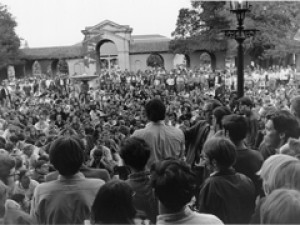 Stanford also shared with other universities the political tensions and activities that came about as the result of the Vietnam War. The first antiwar rally took place in February 1965. The years 1968-1971 were marked by turmoil, including strikes and sit-ins; students and faculty were particularly concerned about ROTC training, CIA recruitment and Stanford’s role as a defense researcher.
Stanford also shared with other universities the political tensions and activities that came about as the result of the Vietnam War. The first antiwar rally took place in February 1965. The years 1968-1971 were marked by turmoil, including strikes and sit-ins; students and faculty were particularly concerned about ROTC training, CIA recruitment and Stanford’s role as a defense researcher.
Racial politics also rose to prominence during those years. In the aftermath of Martin Luther King’s assassination, students successfully demanded that more non-white students be recruited and admitted. The Program in African and African American Studies, established in 1969, was the first ethnic studies program at Stanford, and the first such program at a private institution in the U.S. Stanford also undertook an effort to attract Native Americans to the campus, which coincided with the discontinuation of the “Indian” as Stanford’s mascot. As at other universities, the movement to end apartheid in South Africa mobilized students over a period of a decade or more. The university eventually would divest many of its holdings in companies that did business in South Africa. In 1985, in a singular honor, Stanford was chosen to house the papers of Martin Luther King, Jr.
Women had formed part of Stanford’s student body from the very start, but neither they nor the female faculty had attained anything close to parity during the university’s first decades. In fact, Jane Stanford had specified that no more than 500 female students ever be enrolled at one time. That was changed in the 1930s, when the Board of Trustees decided that the number could increase but that the proportion of men to women should remain constant. All limitations were removed in 1973. Feminist Studies was established as an interdisciplinary major in 1981, and the Center for Research on Women, today the Clayman Institute for Gender Research, opened in 1986.
As at other schools, traditional Western Civilization requirements came under fire in the 1980s in the so-called “culture wars.” At Stanford, the course was replaced in 1988 by a “Cultures, Ideas and Values” requirement, which set off a nationwide debate on the humanities canon. The discussion eventually led to the establishment of Introduction to the Humanities, a yearlong interdisciplinary course for freshmen that continues to exist today. Other measures taken to ensure that Stanford undergraduates would have an educational experience akin to that of far smaller liberal arts schools included the establishment of Introductory Seminars, Sophomore College and a Vice Provost for Undergraduate Education.
THE TWENTY-FIRST CENTURY
We live in an increasingly interconnected world that faces complex problems on a global scale. At the start of the 21st century, Stanford is uniquely prepared among universities – by its breadth of scholarship, entrepreneurial heritage and pioneering faculty – to provide research and real-world approaches to address many of these issues.
In 2006, the university embarked upon an ambitious five-year, $4.3 billion campaign, The Stanford Challenge, to ensure that Stanford continues to educate future leaders and to find solutions to the most pressing global challenges. The scholarly initiatives at the heart of the campaign focus on the environment, international relations, human health, the arts and K-12 education.
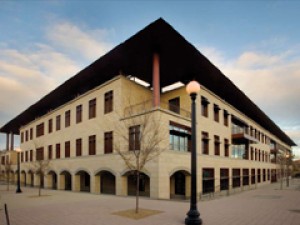 One of the early and outstanding successes of the campaign was the establishment of the Woods Institute for the Environment, housed in the landmark Jerry Yang and Akiko Yamazaki Environment and Energy Building (Y2E2), an innovative “green” structure that opened in 2008.
One of the early and outstanding successes of the campaign was the establishment of the Woods Institute for the Environment, housed in the landmark Jerry Yang and Akiko Yamazaki Environment and Energy Building (Y2E2), an innovative “green” structure that opened in 2008.
The era of globalization means many things for Stanford: research on issues such as international security, exchanges with foreign universities, overseas opportunities for undergraduates, and collaboration with colleagues worldwide. In the area of human health, Stanford is conducting pioneering research in stem cells, bioengineering, regenerative medicine, neuroscience and cancer treatment. Stanford is also expanding its commitment to the arts by creating a new “Arts District” on campus, anchored by the existing Cantor Arts Center and the Bing Concert Hall, a new performing arts center scheduled to open in 2013.
“When Jane and Leland Stanford founded this university, they were investing in the future,” President John Hennessy has noted. “Stanford University continues to do just that. We can’t predict, but we can ensure that our students will be the most knowledgeable of leaders, that they will make a difference and that they will creatively and skillfully guide the next century of progress and excellence.”


he Stanford campus offers a wealth of sightseeing and educational opportunities. We hope these resources will be helpful as you plan your visit to campus.
STANFORD’S CAMPUS
Visit our historic Main Quad with its distinct Richardsonian Romanesque and California Mission Revival architecture or see our new Science and Engineering Quad, which beautifully incorporates modern and technological elements with timeless, elegant aesthetics and an abundance of outdoor space.
- Pick up a self-guided tour map and walk around campus at your leisure, or take a one-hour, student-led Campus Walking Tour at 11am or 3:15pm.
- See a panoramic view of the area from the Hoover Tower observation platform, 285 feet above Stanford’s campus.
- Enjoy a meal at one of our many campus eateries or dining halls.
- Stop in at the Herbert Hoover Memorial Exhibit Pavilion.
Go on other campus tours:
- Memorial Church
- Hanna Honeycomb House
- Jasper Ridge Biological Preserve
- Athletic Facilities
- Cantor Arts Center
ART
Art enthusiasts will enjoy touring the galleries at the Cantor Arts Center and the Thomas Welton Stanford Art Gallery, strolling through the Rodin Sculpture Garden, visiting the student art gallery or walking around campus to view our 42 freestanding outdoor sculptures.
HISTORY
If you are interested in history, visit the collection on the Stanford family and University history in the Cantor Arts Center or venture out to our Historic Red Barn. Constructed in 1878-79, the Red Barn is one of the few surviving structures on campus that predates the University’s establishment and is a Registered Historical Landmark.
SPORTS
Sports aficionados should visit our premier athletic facilities such as the Avery Aquatic Center, Cobb Track and Angell Field, and our Athletic Hall of Fame.
OUTDOOR ACTIVITIES
Campus Walking Tour
Spend an hour with a student guide exploring the highlights of Stanford’s beautiful campus. A great introduction for first-time visitors and tourists.

Read more about the student guides in the Stanford Magazine article, “What You Don’t Know About Tour Guides“.
About the Tour
Highlights: This tour covers central campus, including:
- The Main Quad
- Memorial Church
- Science & Engineering Quad
- White Plaza
The Campus Walking Tour departs from the Stanford Visitor Center.
Duration: 70 minutes
Cost: Free
Schedule: 7 days a week, 11:00am & 3:15pm
The tour may be limited or closed during academic breaks and holidays.
See Calendar for details.
Reservations:
No reservations are required for parties of 9 or fewer. We cannot accommodate parties larger than 9 on the Campus Walking Tour. Groups of 10 or more must book a group tour.
>> About Stanford University. The Discover Stanford Program
Discover Stanford is a two-part program designed to help high school juniors and seniors explore the programs, places, and people that define Stanford’s commitment to undergraduate education within the setting of a world-class university.
Admission Information Session
The first portion of the Discover Stanford program is a one-hour information session conducted by a representative from the Office of Undergraduate Admission. The representative will discuss characteristics that make Stanford distinctive, as well as Stanford’s admission process and commitment to financial aid. (Please note that occasionally the Information Session will follow the Campus Walking Tour.)
Further information about applying to Stanford is available at the Stanford Undergraduate Admissionwebsite.
Campus Walking Tour
This one-hour walking tour is led by a current student and provides an overview of the undergraduate experience, focusing on academic programs, residential life,* and extra-curricular activities.
* Please note that for privacy and security reasons, this tour does not enter student rooms.
Accessibility
If you need a disability-related accommodation, please contact the Disability and Access Center at (650) 725-0326 (voice), (650) 723-1216 (TTY), or e-mail disability.access@stanford.edu.
About the Program
Highlights: The Discover Stanford program includes an admission and academic information session and a campus tour.
Duration: Approximately 2 – 2 ½ hours
Cost: Free
Schedule:
Monday & Friday, 9:30am & 1:30pm
Tuesday, Wednesday, & Thursday, 1:30pm
(Also 9:30am during peak visitation periods.)
The Discover Stanford program may not be offered during academic breaks and holidays. See Visitor Calendar and Academic Calendar
Reservations: The Discover Stanford program requires reservations, and sessions fill quickly. Thus we recommend that you make your on-line reservation well in advance. Limited to six people per party. Larger parties must arrange aGroup Tour
With Stanford’s 8,180 acres, it’s impossible to see all the highlights of campus in one hour. But, if you’d like to see the central campus area, as well as some hidden gems not included on other tours, sign up for our student-led golf cart tour.

Highlights: This tour includes areas covered on the Campus Walking Tour, such as the Main Quad, Memorial Church, and the science and engineering buildings, as well as:
- The Red Barn, where Leland Stanford bred and trained prize-winning horses
- The Cantor Arts Center
- Athletic facilities
Duration: 1 hour
Cost: $5.00 per person. The fee is waived for those with mobility restrictions and one companion.
Schedule: 7 days a week, 1:00pm and *10:00am
The tour may be limited or closed during academic breaks and holidays.
See Calendar for details.
*Starting on 10/05/11
Reservations: Online reservations are required. Two weeks advance notice is recommended. Cart accommodates seven people. Children or infants may not ride on laps.
Please note that there is a great deal of information overlap between the Golf Cart Tour and our other tours (including the Campus Walking Tour and Discover Stanford Tour). We strongly recommend choosing only one tour that best suits your needs and interests.
Designed exclusively for school, team, or community groups, these tours offer a great introduction to Stanford University. Reservations are required, so book ahead!

Additional Information: All tours are conducted in English, and visiting groups with non-English speaking participants must provide their own interpreter(s).
Highlights: Group tours follow the same route as our Campus Walking Tours and include:
- The Main Quad
- Memorial Church
- White Plaza
Upon advance request, tours may include areas of specific interest to the group.
Duration: 1 hour
Cost: The charge for group tours varies depending on the size and type of group.
Schedule: 7 days a week, 9:45am, 12:15pm, 1:15pm, 2:15pm, and 4:00pm
The tour may be limited or closed during holiday or academic break periods. See Calendar for details.
Reservations: All groups of 10 or more must make an advance reservation for a tour. To book a group tour, please contact the Visitor Information Services Private Tour Coordinator at (650) 725-3335.
A limited number of private tours can be accommodated in any given day, so groups are encouraged to call well in advance of the date they are hoping to visit.
If you are coming to campus with a group of 9 or less, you may join one of our Campus Walking Tours — no reservation is required.
…
>> About Stanford University. Residence Hall Tour.
Are you a prospective Stanford undergraduate? Come learn about Stanford residential life on this virtual tour of residences, dining halls, and lounges.
>> HOUSING OPTIONS
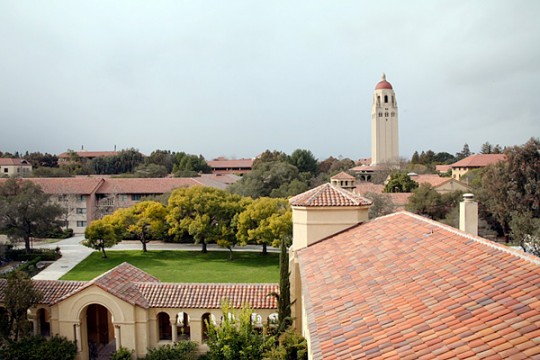 Introduction
Introduction
A diverse system of housing provides students with a variety of educational settings including academic theme and focus houses, ethnic theme houses, self-managed and cooperative residences, apartments and suites in addition to traditional residences.
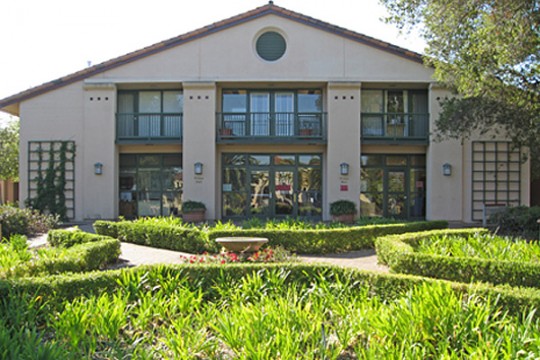 All Freshman House: Wilbur
All Freshman House: Wilbur
In all-freshman houses, students enjoy the camaraderie and support generated by living with an entire house of first-year students. Wilbur Hall is a large residence complex – home to approximately 700 students – consisting of eight houses (1 four-class house and 7 all-freshman houses) which surround a central dining commons. Each house has a lounge, computer cluster, and other common areas, providing gathering spaces for the closely-knit communities, and all residents eat at Wilbur dining hall.
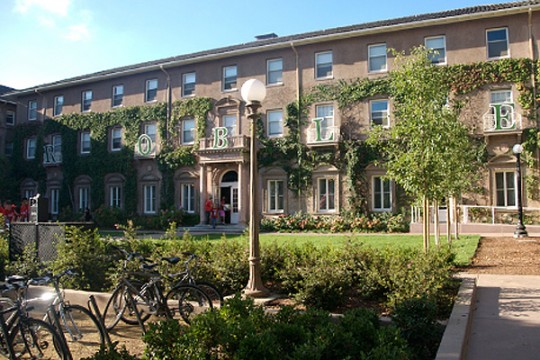 Four Class House: Roble Hall
Four Class House: Roble Hall
Freshmen in four-class houses benefit from the best of all worlds – bonding with fellow freshmen who are undergoing similar first-year experiences, plus close interaction with upper class students who have much to share from their own campus history. Roble Hall, built in 1918, is one of Stanford’s most historic residences. This four-class residence hall houses approximately 300 students, many of them freshmen.

Upper Class House: Mirrielees
Upper class houses are comprised of sophomores, juniors, and seniors. Mirrielees is an apartment residence for upper class students. Built in 1972, originally as part of the nearby Escondido Village graduate community, it currently houses approximately 300 undergraduate residents. Each furnished apartment has a small living-dining area, a kitchen, and bathroom.
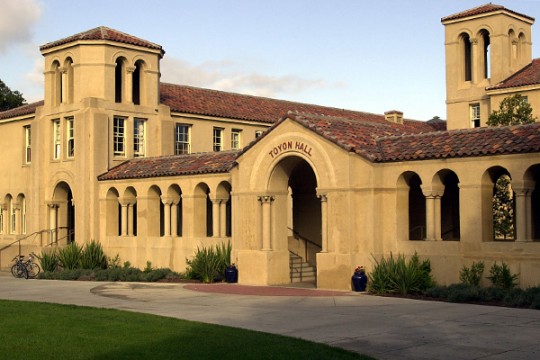
All Sophomore House: Toyon
Toyon Hall offers residential programming tailored to meet the needs of second-year students. It is the first Stanford house with an all-sophomore emphasis. Baronial Toyon Hall is one of Stanford’s most historic residences. Originally built for 150 men in 1923, Toyon was a tarnished jewel when a Stanford-alumni-led architectural firm was entrusted with its restoration in 2000.
Freshman/Sophomore Houses: FroSoCo Adams
Freshman-Sophomore College (FroSoCo) combines the energy and excitement of an all frosh dorm with the perspectives of a four-class residence. FroSoCo is comprised of two houses (Adams & Schiff) located in the Sterling Quadrangle. Adams was named for Ephraim Douglass Adams, history professor and first chairman of the Hoover Library; a physics professor, Leonard Isaac Schiff, and first chair of the Faculty Senate is the namesake for Schiff.
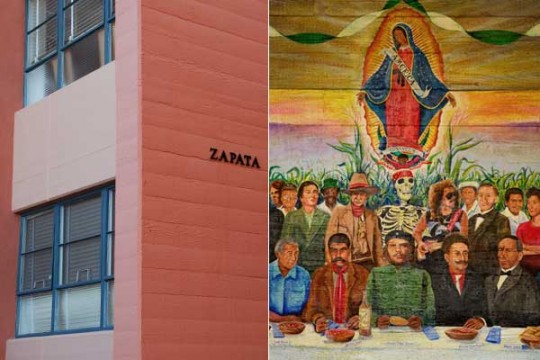
Ethnic Theme Houses
Casa Zapata is the Chicano/Latino Theme House. Theme houses provide cross-cultural living at its best, where students of different racial, ethnic, and social backgrounds participate in activities that celebrate, inform, and teach all of the residents of the house about the focus culture’s traditions, beliefs, and history. Symbolizing the diversity of the theme houses, approximately one-half of the residents in a theme house are of an ethnic or cultural background differing from the theme group.
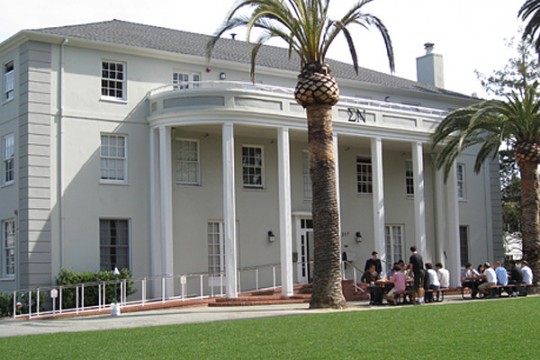
Greek Houses: Sigma Nu
Fraternities and sororities have been a part of Stanford since the first day the University opened in 1891. Greeks have enjoyed a vibrant and dynamic existence here, and represent 13% of the undergraduate student population. Currently, 28 Greek organizations are formally recognized by the University—ten are housed on Stanford’s campus, seven fraternities and three sororities. Sigma Nu is located on the Row. Residents for Greek houses are chosen through the annual rush process.
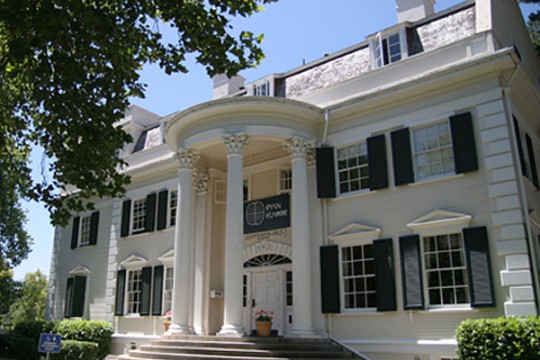
Cooperative Living Houses (Co-Ops): Columbae
Cooperative houses, or co-ops, are student-managed residences in which house members cooperate in the operation and governance of the house. While each co-op has a unique identity and ranges in size from 30 to 65 residents, the common conviction is that by sharing in the full spectrum of house activities, the members of the house develop a greater sense of community and commitment to each other. Columbae house programs center on the theme of social change through nonviolence.
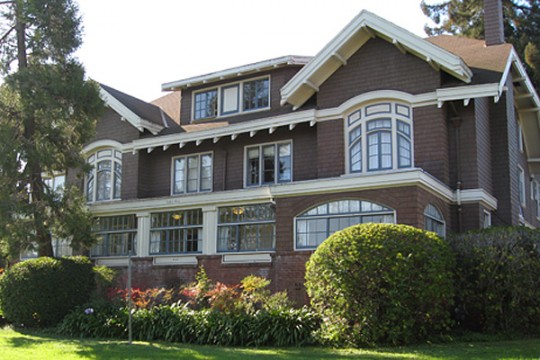
Academic, Language and Culture Houses offer programs organized around academic or language themes. Theme houses enable both majors and non-majors with an active interest in a field to live together and explore a theme in a fun and comfortable residential setting. La Maison Française is a self-operated house or self-op. Self-ops are undergraduate houses in which student residents, manage the operation of the house’s meal service and hire a house cook.
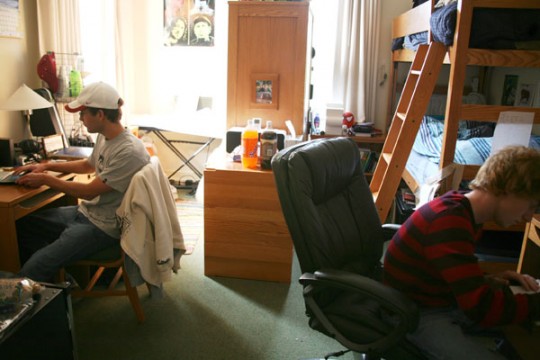
>> COMMUNITY
The residence hall community is a place where students make lifelong friends, relax and hang out, and develop a deeper understanding of the world beyond the University.
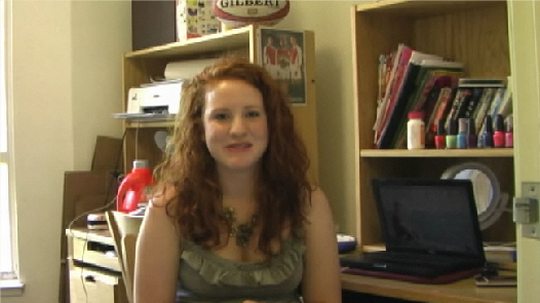
>> DINING
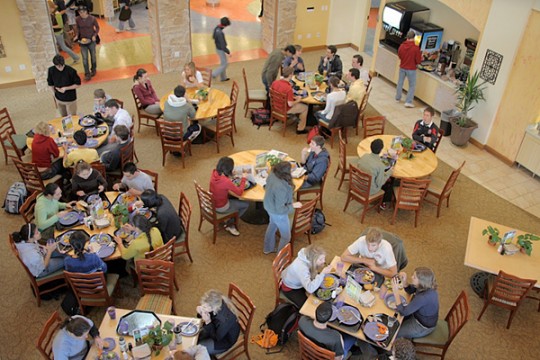
Introduction Stanford Dining is an award winning program known and recognized for passionately celebrating great tasting, high quality food. The dining halls feature the highest quality, locally-grown, sustainable foods in each dining hall. Fresh foods prepared just in time are always available along with a daily variety of delicious options for every preference or diet including vegetarian, vegan, and Halal.
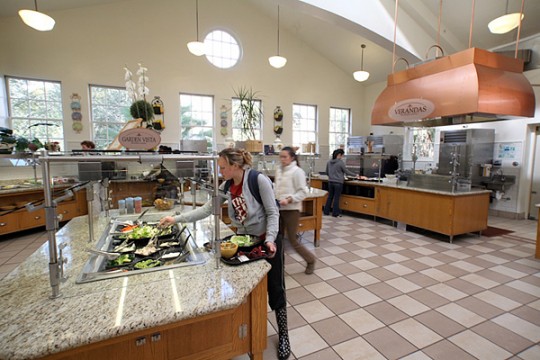
Wellness Students can choose from a variety of healthy options at every meal. Stanford Dining has award winning chefs who are involved in all aspects of menu planning. Registered dietitians are also available for consultation and to make appropriate dietary recommendations. The menus feature foods that are free of artificial preservatives, colors, flavors, sweeteners, and transfat. Stanford Dining promotes safe, wholesome food and nutrition which advocates a healthy lifestyle and well-being.
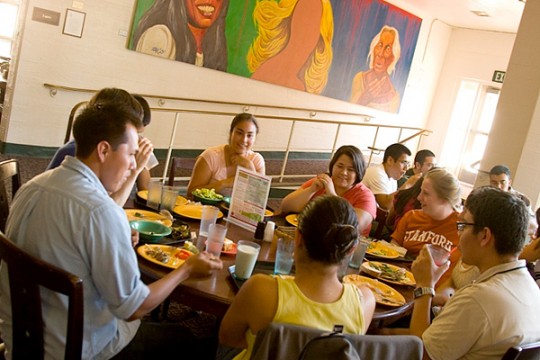
Meal Plans Stanford Dining is committed to excellence by providing Meal Plans that offer significant value, the highest quality, and maximum flexibility of dining across campus. Stanford Dining serves 19 meals each week: breakfast, lunch and dinner, Monday through Friday, and brunch and dinner on the weekends. There are three meal plans to choose from: »19 meals/week »14 meals/week plus Meal Plan Dollars »10 meals/week plus Meal Plan Dollars.
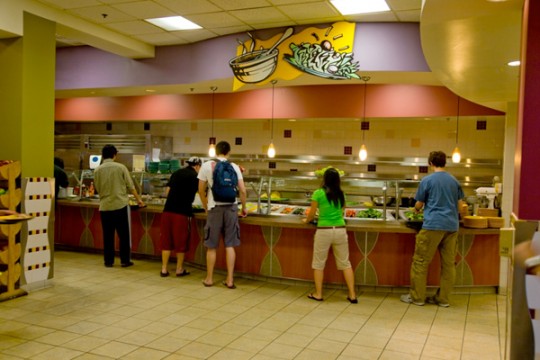
Late Night/After Hours Several dining halls and retail cafes on campus offer late-night dining options. Even after the sun goes down, we’re up for you with tasty treats and late-night food galore! Special events at these locations range from musical performances to guest speakers to student poetry slams all at a late-night spot near you.
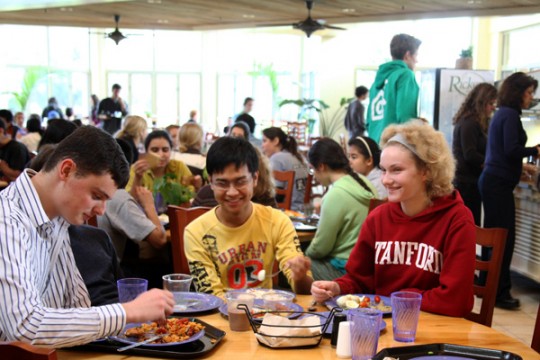
Community Building Stanford University's Residential Education program promotes the philosophy that living and learning are integrated and that formal teaching, informal learning, and personal support in residences are integral to a Stanford education. Meals play a key role in this mission of community building, leading, and learning. Students' most memorable conversations occur around the dinner table with their housemates. Academic programs such as Faculty Speaker Education Series take place in the dining halls.
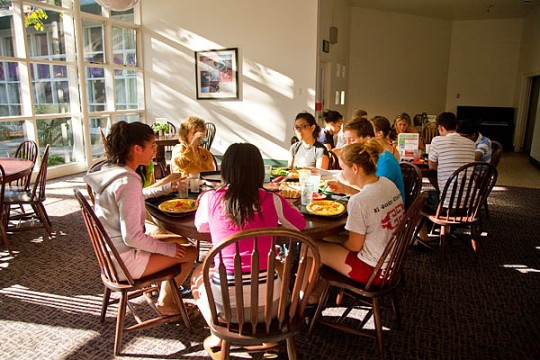
Food Allergies Stanford Dining strives to meet each student’s specific dietary needs. In response to a clear need for peanut allergy awareness in university dining services nationwide, Stanford Dining has designated Ricker Dining as a peanut-sensitive environment, making it the first on campus dining facility of its kind in the country.
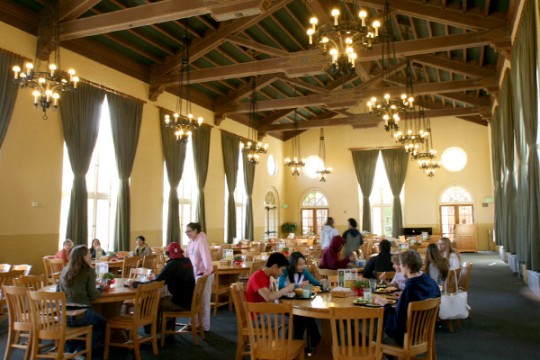
Religious Food Practices Stanford Dining values the cultural and religious diversity that is intrinsic to the Stanford community. They take pride in their efforts to honor most requirements and constraints in each of the dining halls. Students may request an exemption to the meal plan requirement if they have concerns about meeting religious dietary requirements.
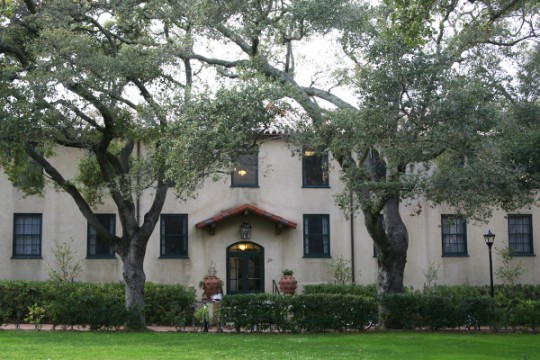
Sustainability Stanford Dining strives to make every meal delicious and healthy for the eater and beneficial to the people, animals and environment that created it. Stanford Dining’s efforts contribute to a sustainable food environment at Stanford, which is accomplished through partnerships within the University, the local community, and the broader sustainable food system.
Stanford’s housing system guarantees campus housing to entering freshmen for all 4 years and 2-3 years for transfer students.
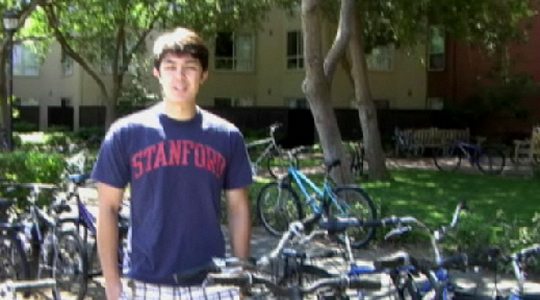
All houses foster abundant social opportunities, including dances, theme nights, intramural athletic games, and off-campus day and weekend trips. Each type of residence offers a distinct lifestyle that tries to meet the needs of Stanford’s diverse student body.
…
>> RESIDENTIAL EDUCATION
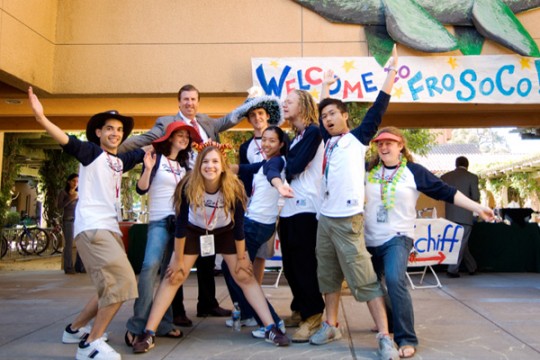
The Residential Education program provides Stanford undergraduates a small community experience within a large research university. The essential conviction behind the Stanford residence program is that formal teaching, informal learning, and personal support in residences are integral to a Stanford education

Residential Education programs extend the classroom into the residences and complement the academic curriculum with activities and experiences essential to students’ preparation for a life of leadership, intellectual engagement, citizenship, and service.
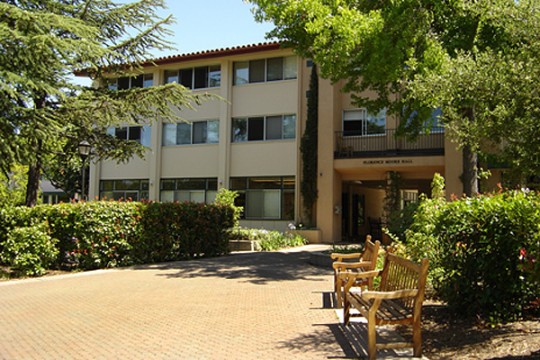
Structured Liberal Education (SLE)
SLE is an intensive, residential experience that encourages students to cultivate a capacity for critical thinking, a tolerance for ambiguity, and a life of ideas. The character of SLE as a residential community is integral to its success. SLE freshmen live and learn together in three houses within Florence Moore Hall, the setting for lectures, small-group discussions, films, and plays. Faculty and instructors participate actively in the intellectual life of the dorm, regularly dining with students and holding individual writing tutorials.
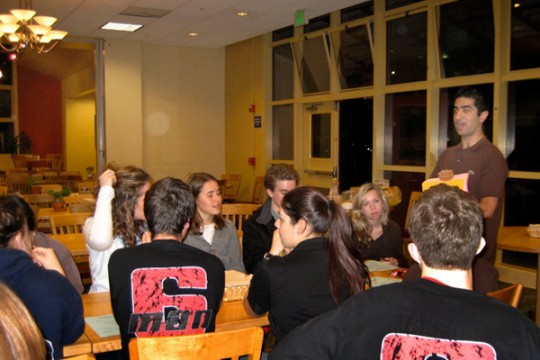
Residence Staff
Residence staff members are the central support system in students’ residential lives. The residence staff is comprised of in-house staff members who support students in a variety of ways.
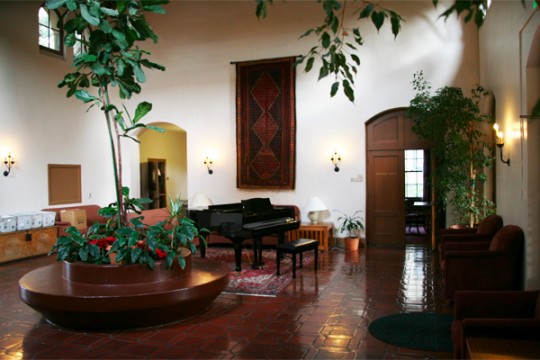
Residence Dean (RD)
The RD is a trained professional who can advise students about personal matters, assist with personal emergencies, and intervene directly in behavioral problems, when necessary. RDs advise on issues of housing and roommate concerns, and other administrative matters.
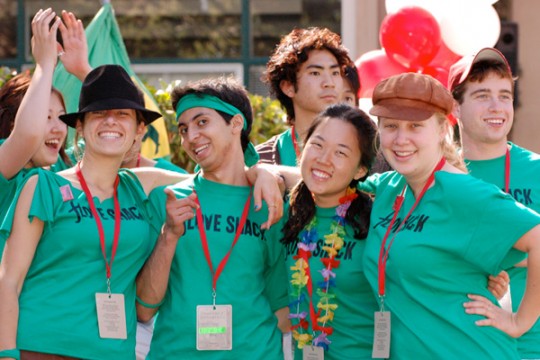
Resident Assistants (RAs)
RAs are upperclass students who work closely with students and their RF’s to plan activities and programs for each residence. RAs are available whenever a student has a problem, and can provide valuable insights from their own Stanford experiences; they are students who want to listen and help.

Resident Computer Consultant (RCC)
The RCCs support students’ network connections, personal computing, and residence computer clusters. They also conduct workshops and provide general technical education and consulting for students in their dorms.

Peer Health Educator (PHE)
PHEs are highly trained student staff who work under the supervision of Vaden’s Health Promotion Services. The PHE provides resources and advice on health and wellness topics. They are also responsible for residential programming to promote the awareness of healthy living practices.
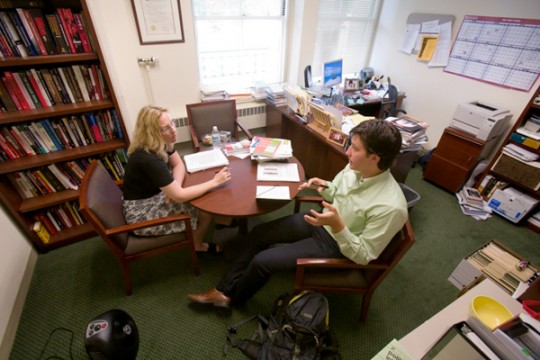
Academic Director (AD)
Every freshman residence has an AD who is there to advise students about curricular choices, general education requirements, exploring majors, and other academic opportunities.

Residence Student Affairs Specialist (RSAS)
RSASs are frequently the first point of contact for students and provide support for residence staff, Resident Fellows, and College Directors. RSASs have a broad range of knowledge about campus procedures and resources, enabling them to answer many of the questions that students might have about life in the residences.

> About Stanford University. University Administration.
>> UNIVERSITY GOVERNANCE
Stanford University is led by President John Hennessy and Provost John Etchemendy. For more details on Stanford’s governance, please visit Stanford Facts: University Governance.
See Also:
>> ADMINISTRATIVE OFFICES
Stanford’s administrative offices are essential to supporting the operations and mission of the university. They deal with a diverse range of issues including human resources, financial activities, research administration and student affairs.
More Info:
- Human Resources
- Financial Activities
- Research Administration
- Student Affairs
- A – Z list of Administrative Offices
>> STAFF
Stanford’s employees are one of its most valuable resources. The campus is full of talented and dedicated people making important contributions to the life and fabric of our community. For more information about working at Stanford, visit jobs.stanford.edu
>> ADMINISTRATIVE POLICIES
The Admin Guide is Stanford’s primary manual of administrative policies. A list of other university-wide policy documents is also available.

> About Stanford University. The Basics.
-> Where is Stanford?
>> SILICON VALLEY
Located 35 miles south of San Francisco and 20 miles north of San Jose, Stanford University is in the heart of Northern California’s dynamic “Silicon Valley,” home to Yahoo!, Google, Hewlett-Packard, and many other cutting-edge companies that were started by and continue to be led by Stanford alumni and faculty.
>> THE BAY AREA
To the west of the University’s 8,180-acre campus are the Santa Cruz Mountains and Pacific Ocean, and to the east San Francisco Bay. Known as The Peninsula , the area is rich in natural beauty, culture, and entertainment.
>> PALO ALTO
Although the University is virtually a community unto itself and even has its own zip code—94305—it calls the City of Palo Alto home. Downtown Palo Alto is a short walk from campus and includes many attractions, as well as many shops and restaurants.
-> Campus Highlights
>> PLACES TO SEE
With so much to do on Stanford’s campus, it can be hard to decide how to spend your time here. Here are some suggestions.
- Hoover Tower
- Memorial Church
- Cantor Arts Center
- Athletic Facilities
- Stanford Shopping Center
- The Dish
- Hanna House
- Jasper Ridge Biological Preserve
- Stanford Linear Accelerator

>> OVERVIEW
Can’t find a specific building? Want to know what’s happening on campus on the night of your visit? At the Stanford Visitor Center, located at 295 Galvez Street, our staff can make your visit more informative and pleasurable.
Stanford University’s Visitor Information Services welcomes more than 100,000 visitors to campus annually, offering campus tours and providing information about the university and the surrounding area.
>> WE ARE HERE TO HELP
Our trained staff of 75 student tour guides represents many academic disciplines and campus activities including student leadership, performing arts, community service, and athletics. They help visitors navigate and enjoy our world-class facilities, sprawling foothills, and distinctive sandstone and tile architecture.
See the Contact Us page for office hours, email, phone, address information.
>> MAPS
Stanford is easily accessible from throughout the San Francisco Bay area, including San Francisco, Berkeley, and San Jose. We encourage you to download and print both the Parking and Circulation Map(PDF) and the Visitor Map (PDF) and bring them with you.
— Campus Maps
— Transportation Maps
— Area Maps
The following driving directions are to the Stanford Visitor Center.
— From Highway 101 North & South
Exit onto Embarcadero Road and travel west, following the signs directing you to Stanford University. About three miles after you exit the freeway, Embarcadero Road becomes Galvez Street as you cross El Camino Real. Stay in the left lane and continue past the stadium. The entrance to the Visitor Center Lot is on the left just beyond Nelson Road.
— From Highway 280 North & South
Exit onto Sand Hill Road and follow the signs for Stanford University. Heading east, drive approximately 3 miles to the Stanford Shopping Center. Turn right onto Arboretum Road (Nordstrom is on your right). Stay on Arboretum until it ends, then turn right onto Galvez Street. Move to the left lane and continue past the stadium. The entrance to the Visitor Center Lot is on the left just beyond Nelson Road.
— Parking
The Visitor Center Lot (L-95 on the campus map) is located on Galvez Street between Nelson Road & Campus Drive, near the Stanford Stadium. If the Visitor Center Lot is full (possible in the afternoon), purchase a permit at the Visitor Center Lot and drive to the Varsity Lot at the end of Nelson Road, behind the stadium. (*See additional important instructions below.) Permits are required in both lots. If you park in the Varsity Lot, you must first purchase a permit at the Visitor Center Lot.
Upon entering the Visitor Center Lot, turn right. The parking permit vending machine is located near the Stanford Athletics Store. Purchase a parking permit and display on your dashboard. The vending machine accepts credit cards, bills, or coins. If you are attending Discover Stanford, allow at least three hours. Parking is free after 4 PM. Please note that the parking lots are monitored regularly and violations are expensive.
Park only in spaces designated “P” or “E”. (Do not park in spaces with only a “C” sign.) “E” parking is located at the left end of the lot, along Nelson Road across from the stadium.
The Visitor Center is located at 295 Galvez Street at Campus Drive, adjacent to the parking lot and Athletics Store.
— Important Instructions
*If the Visitor Center Lot is full, overflow parking is available in the Varsity Lot, behind the stadium at the end of Nelson Road. (See 12-E on the campus map.) Park only in spaces marked with an “E” or a “P” sign or at the meters, and be sure to display your permit, which can be purchased only at the Visitor Center Lot. (Permits are valid at the meters, even beyond the 2-hour time limit.)
-> Public Transit
Whether you are staying in Palo Alto or traveling from elsewhere in the San Francisco Bay Area, you can reach Stanford by way of convenient public transportation.
The local transit hub for bus and train services at Stanford is the Palo Alto Caltrain Station, located near the main entrance to campus near the intersections of Palm Drive, University Avenue, and El Camino Real. The Stanford Marguerite Shuttle, the University’s free shuttle bus, operates several routes. Most provide service from the Caltrain Station to multiple campus locations.
If you are traveling from San Francisco or San Jose, Caltrain is your most convenient option. A one-way trip from San Francisco takes approximately one hour and costs about $5.75; a one-way trip from San Jose takes approximately 40 minutes and costs about $4.00. Caltrain also connects with stations and shuttles serving the San Francisco and San Jose International Airports.
A set of basic directions to Stanford for travelers using public transportation is available on our Bay Area Transit website.
— Public Transit Resources
-> Airports
>> MAJOR AIRPORTS
Three major airports serve the San Francisco Bay Area, including San Francisco International (SFO), San Jose Mineta International (SJC), and Oakland International (OAK). We suggest comparing fares to all three airports, as there can be significant differences, even for the same airline.
— Choosing Airports
Stanford is roughly equidistant from the San Francisco and San Jose airports. Although San Francisco is the largest of the three area airports and offers the most airlines and flights, some visitors find that San Jose’s smaller size makes it a somewhat more convenient alternative, especially for domestic flights.
— Learning More About the Airport Options
Helpful information about each airport, including all transportation options, is available at theSFGate.com website. Public transportation alternatives are listed on the Stanford Parking and Transportation Services Airport Transportation website.


